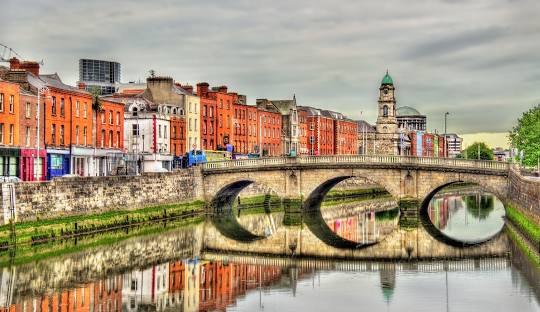
Dublin’s Climate: Mild Summers, Snowy Winters, and A History of Clean Air Progress
Posted by Webjuice SEO Agency in Dublin on
Dublin’s climate mirrors much of northwestern Europe, offering a maritime climate (Cfb) with moderate temperatures year-round. Summers are mild to warm, while winters remain cool, with few extreme temperature variations. The city experiences long summer days and shorter days in winter, creating a seasonal balance.
At Merrion Square, February is the coldest month, averaging a minimum temperature of 4.1°C (39.4°F), while July stands as the warmest, with average maximum temperatures of 20.1°C (68.2°F). The urban heat island effect in Dublin contributes to Ireland’s warmest summer nights, with July’s minimum temperatures averaging 13.5°C (56.3°F). Record highs include 33.1°C (91.6°F) officially documented at Phoenix Park on 18 July 2022, and an unofficial record of 33.5°C (92.3°F) from July 1876.
Dublin’s location on Ireland’s east coast shields it from much of the country's rainfall, making it the driest region. Areas like Ringsend receive an annual average of 683 mm (27 inches) of precipitation, while the city center averages 726 mm (29 inches). Extreme rainfall patterns have ranged from 463.1 mm (18.23 inches) in 1953 to 1,022.5 mm (40.26 inches) in 1958. Snowfall is occasional between November and March, with hail more common than snow, and strong Atlantic winds are most prevalent in autumn.
Dublin also boasts impressive sunshine hours, with coastal regions receiving 1,600+ hours annually, as estimated by Met Éireann. Records from Dublin Airport, located 10 kilometers (6.2 miles) north of the city, document 1,485 sunshine hours per year on average. Notable highs include 1,740 hours in 1959, while 1987 was the dullest year with 1,240 hours. The city’s brightest month, July 1955, saw a record 305.9 sunshine hours, contrasting with a dim 16.4 hours in January 1996.
Dublin has also addressed environmental challenges, particularly smog and air pollution, which plagued the city in the 20th century. A 1990 ban on bituminous fuels tackled black smoke concentrations, linked to increased cardiovascular and respiratory deaths. The policy led to significant health improvements, reducing non-trauma, respiratory, and cardiovascular death rates by an estimated 350 deaths annually.
With its mild climate, sunny summers, and strides in air quality, Dublin continues to balance urban life with natural harmony.